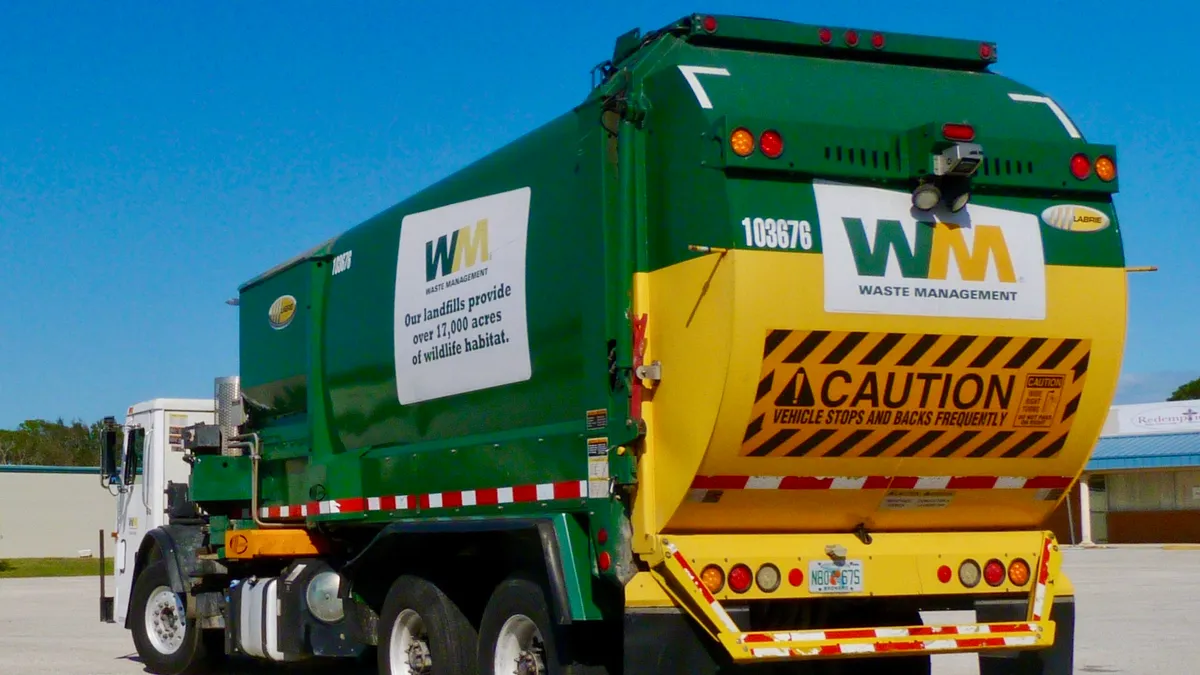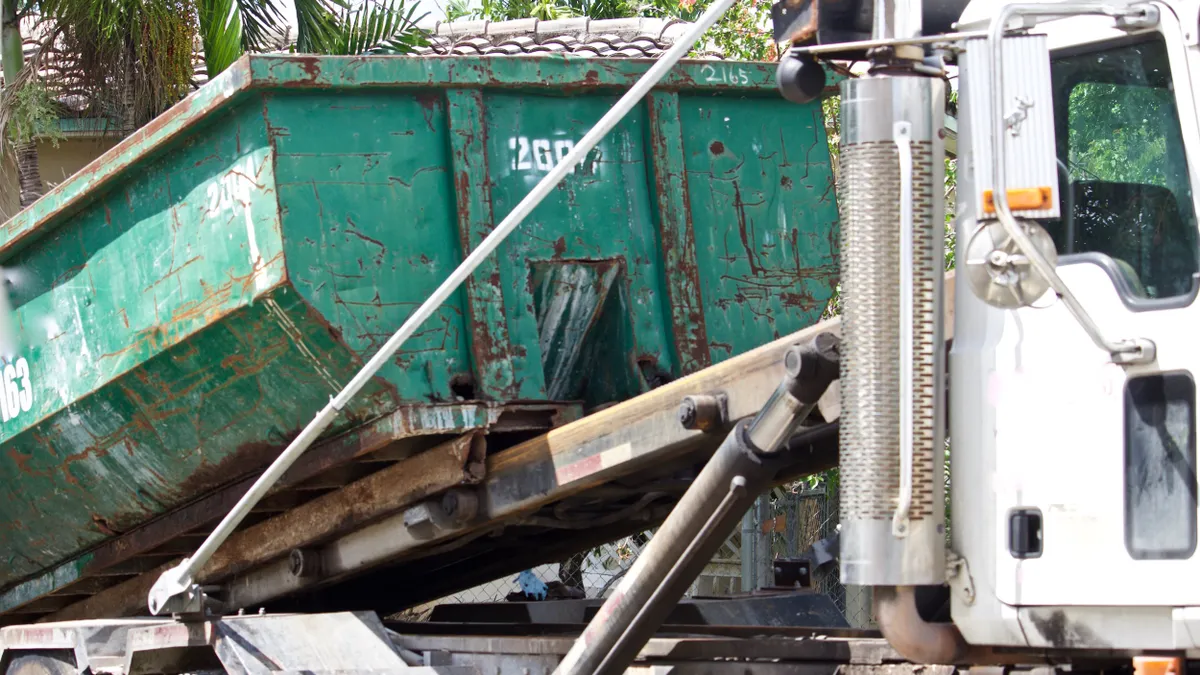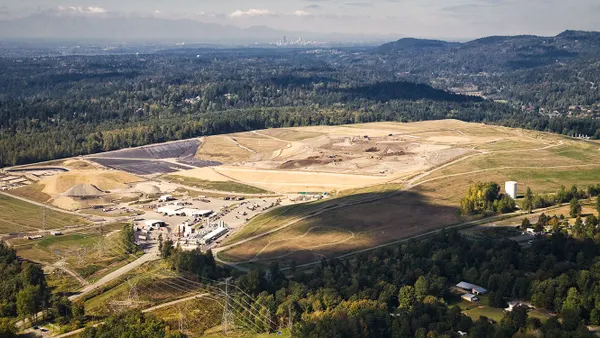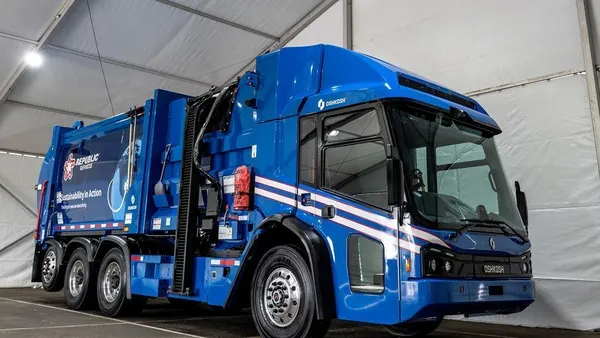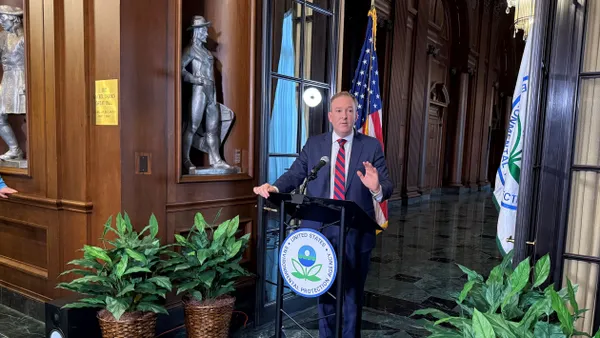UPDATE: Aug. 28, 2019: Delaware's New Castle County Council approved an ordinance yesterday that caps the height of landfills at 140 feet and sets multiple conditions for any expansion, as reported by the News Journal. The move comes in response to opposition over Waste Management's request to increase the height of its Delaware Recyclable Products, Inc. C&D landfill from 130 feet to 190 feet.
Residents, council members and Artesian Water representatives raised concerns about air and water pollution. According to Waste Management, the height limit could force the Minquadale landfill to close within two years. The company said it plans to challenge the decision.
Dive Brief:
- Waste Management has submitted an application to increase the maximum height of its Delaware Recyclable Products, Inc. (DRPI) construction landfill from 130 feet above sea level to 190 feet. The company estimates this could extend the site's lifespan by up to 21 years. Without it, communications manager John Hambrose told Delaware Public Media, the landfill could be full within a year.
- Residents in neighboring Minquadale are protesting the change, prompting New Castle County Councilman Jea Street to introduce an ordinance that would cap area landfills at 140 feet and require in-depth impact assessments to go higher. State Rep. Franklin Cooke told WHYY that his low-and middle-income constituents living near the site complain of odors, dust and truck traffic.
- The DRPI site is permitted to accept up to 2,400 tons of C&D waste per day. The volume of out-of-state waste has become a focal point for opponents, as tonnage also comes from Pennsylvania, New Jersey, Maryland and New York. Waste Management was not able to specify an average percentage of imported waste when asked by Waste Dive, citing varying factors such as "weather" and "economic activity."
Dive Insight:
Most of Delaware's solid waste goes to three landfills operated by the Delaware Solid Waste Authority, which saw a 16% increase in C&D tonnage last year. According to the authority, about 23% of waste disposed in Delaware is C&D, including streams going to the DRPI Landfill.
The Minquadale Civic Association supports the vertical expansion, touting the landfill's economic benefits. Waste Management injects $10 million annually into the local economy, and the DPRI landfill employs 150 people, Hambrose said at a public hearing on May 29.
Meanwhile, some of the landfill's most vocal critics are elected officials, including Street, Cooke and New Castle County Executive Matt Meyer.
"[We] will do everything in our power to make sure this increase in height does not happen in our neighborhood," Meyer said at the hearing.
"If you look left going from Wilmington to Old New Castle, you will see the top of that 'Mount Minquadale,'" Meyer said. "… For nearly four decades now, this waste has been coming from Pennsylvania, New Jersey, and being put here. Isn't it time we find a site in Pennsylvania and New Jersey to put our waste?"
Fugitive dust was also identified as a source of public concern. The Delaware Department of Natural Resources and Environmental Control's (DNREC) draft permit modification requires the landfill's operators to add six inches of cover every week and during wind forecasts. The current permit requires cover every two weeks.
In addition, Castle County residents expressed concerns about the potential for groundwater contamination. DNREC considers more than 90% of Delaware's waters impaired. Although the DRPI Landfill has an engineered barrier for newer cells and monitors leachate seeps daily, the Artesian Water Company reports increased levels of contaminants in its groundwater supply. Representatives for the water utility suggested at the May 29 hearing that some of those contaminants could be coming from the DRPI landfill.
The DRPI site — previously a gravel pit dating back to the late 1940s — was converted to a C&D landfill in 1983. Waste Management has operated the site since 1998, following its merger with USA Waste. When the company filed its expansion application in July 2018, it noted 1.8 million cubic yards of remaining capacity. Increasing the vertical limit from 130 feet to 190 feet would add 8.4 million cubic yards.
DNREC is accepting public comment on the DRPI application through June 28.


